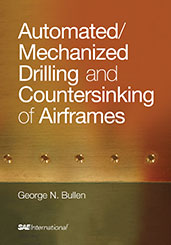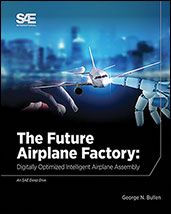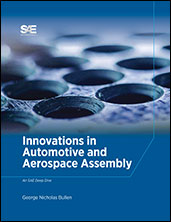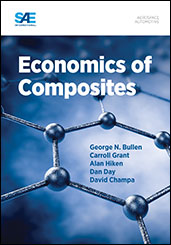Book

Automated/Mechanized Drilling and Countersinking of Airframes
2013-05-07
Modern aircraft manufacturing involves drilling and countersinking hundreds of thousands to millions of holes. Doing this work by hand accounts for 65% of the cost of airframe assembly, 85% of the quality issues, and 80% of the lost time due to injuries. Automated drilling and countersinking replaces traditional hand methods and involves using numeric control machinery to drill and countersink a finished hole “one shot” (drilling a finished hole without using pilot holes or tool changes). This is a proven cost reducing technology that improves quality where it has been applied successfully. The focus of this book is on automating the process of drilling and countersinking holes during airframe manufacturing.



